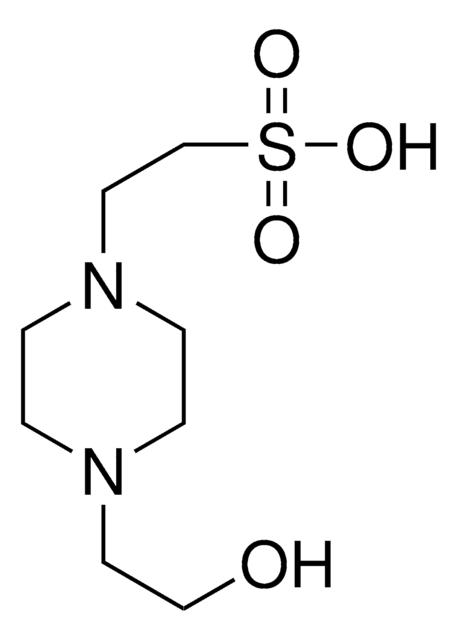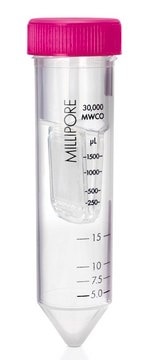H23830
HEPES
≥99% (titration), crystalline, reagent grade
Synonym(e):
4-(2-Hydroxyethyl)-piperazin-1-ethansulfonsäure
About This Item
Empfohlene Produkte
product name
HEPES, reagent grade, ≥99% (titration), crystalline
Biologische Quelle
synthetic
Qualitätsniveau
Qualität
reagent grade
Assay
≥99% (titration)
Form
crystalline
Nützlicher pH-Bereich
6.8-8.2
pKa (25 °C)
7.5
SMILES String
OCCN1CCN(CC1)CCS(O)(=O)=O
InChI
1S/C8H18N2O4S/c11-7-5-9-1-3-10(4-2-9)6-8-15(12,13)14/h11H,1-8H2,(H,12,13,14)
InChIKey
JKMHFZQWWAIEOD-UHFFFAOYSA-N
Suchen Sie nach ähnlichen Produkten? Aufrufen Leitfaden zum Produktvergleich
Verwandte Kategorien
Allgemeine Beschreibung
HEPES extends its utility as a preferred separator in creating pH gradients for isoelectric focusing, a technique in protein separation. Beyond these applications, it proves beneficial in immunoprecipitation, cell lysis, live cell imaging, establishing its indispensability across diverse research areas due to its versatility and minimal interaction with other molecules.
Anwendung
- as a component in Danieau medium, which is used to prevent melanin pigment formation post gastrulation of zebra-fish embryo
- as a component of Hanks′ solution used in the degradation testing of Iron
- as a component of HEPES medium in the transfection of cell culture with plasmids
- along with RPMI-1640, L-glutamine, FBS, Sodium pyruvate and β-mercaptoethanol for the culturing of rat insulinoma cells
- as a supplement in TCM199 medium for washing fresh oocytes required for nuclear transfer studies
Leistungsmerkmale und Vorteile
- High purity product for biochemical and biological research
- Highly soluble in water with a useful pH range of 6.8 - 8.2 and pKa of 7.5 at 25 °C
- Broad buffer range between pH 6.8 to 8.2
- Zwitterionic at biological pH
- High solubility and stability
- Low UV and visible light spectrum absorbance
- Negligible metal ion binding
- Suitable for cell culture, electrophoresis, in vitro methods, etc.
Sonstige Hinweise
Lagerklassenschlüssel
11 - Combustible Solids
WGK
WGK 1
Flammpunkt (°F)
Not applicable
Flammpunkt (°C)
Not applicable
Choose from one of the most recent versions:
Analysenzertifikate (COA)
Sorry, we don't have COAs for this product available online at this time.
If you need assistance, please contact Kundensupport
Besitzen Sie dieses Produkt bereits?
In der Dokumentenbibliothek finden Sie die Dokumentation zu den Produkten, die Sie kürzlich erworben haben.
Unser Team von Wissenschaftlern verfügt über Erfahrung in allen Forschungsbereichen einschließlich Life Science, Materialwissenschaften, chemischer Synthese, Chromatographie, Analytik und vielen mehr..
Setzen Sie sich mit dem technischen Dienst in Verbindung.
